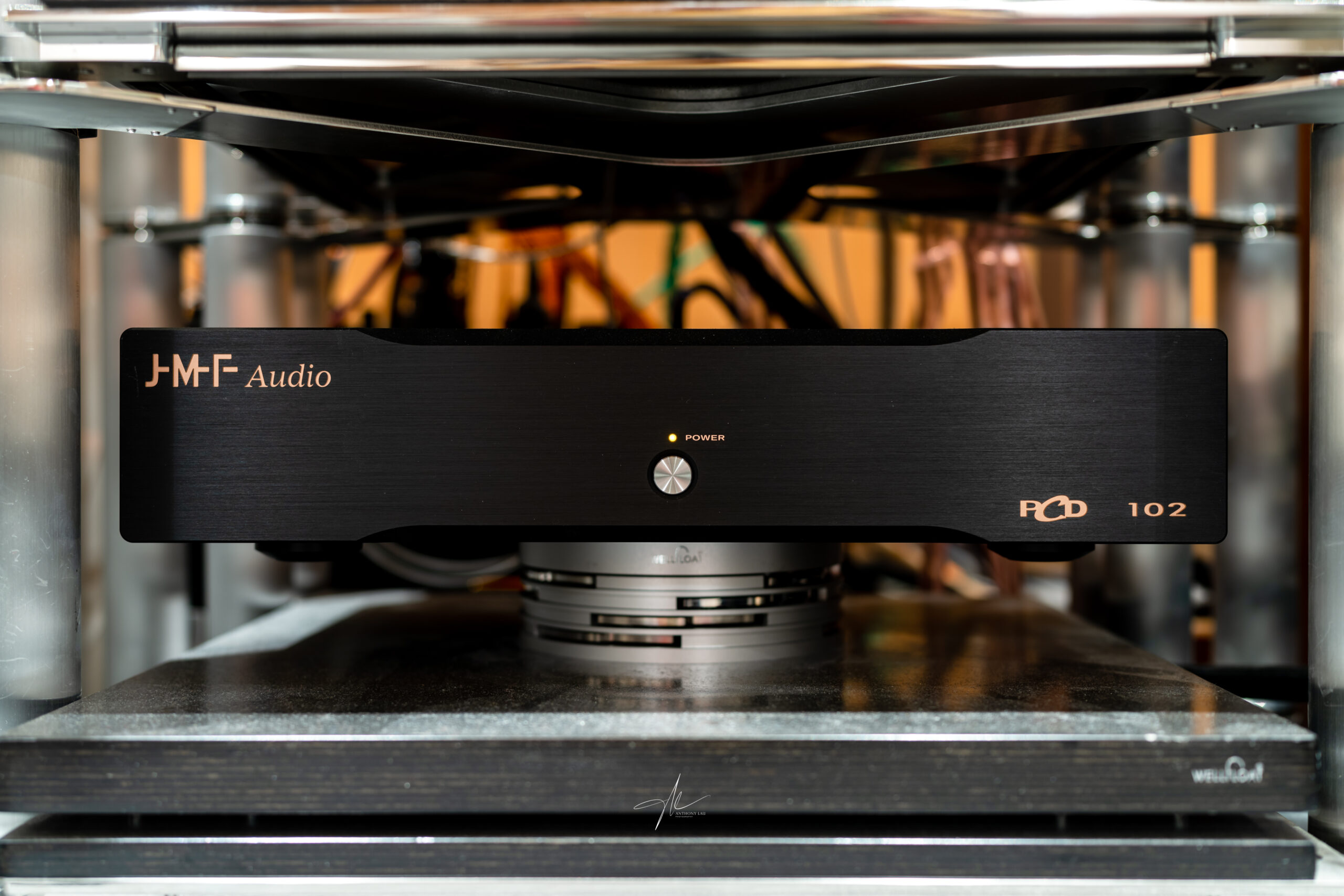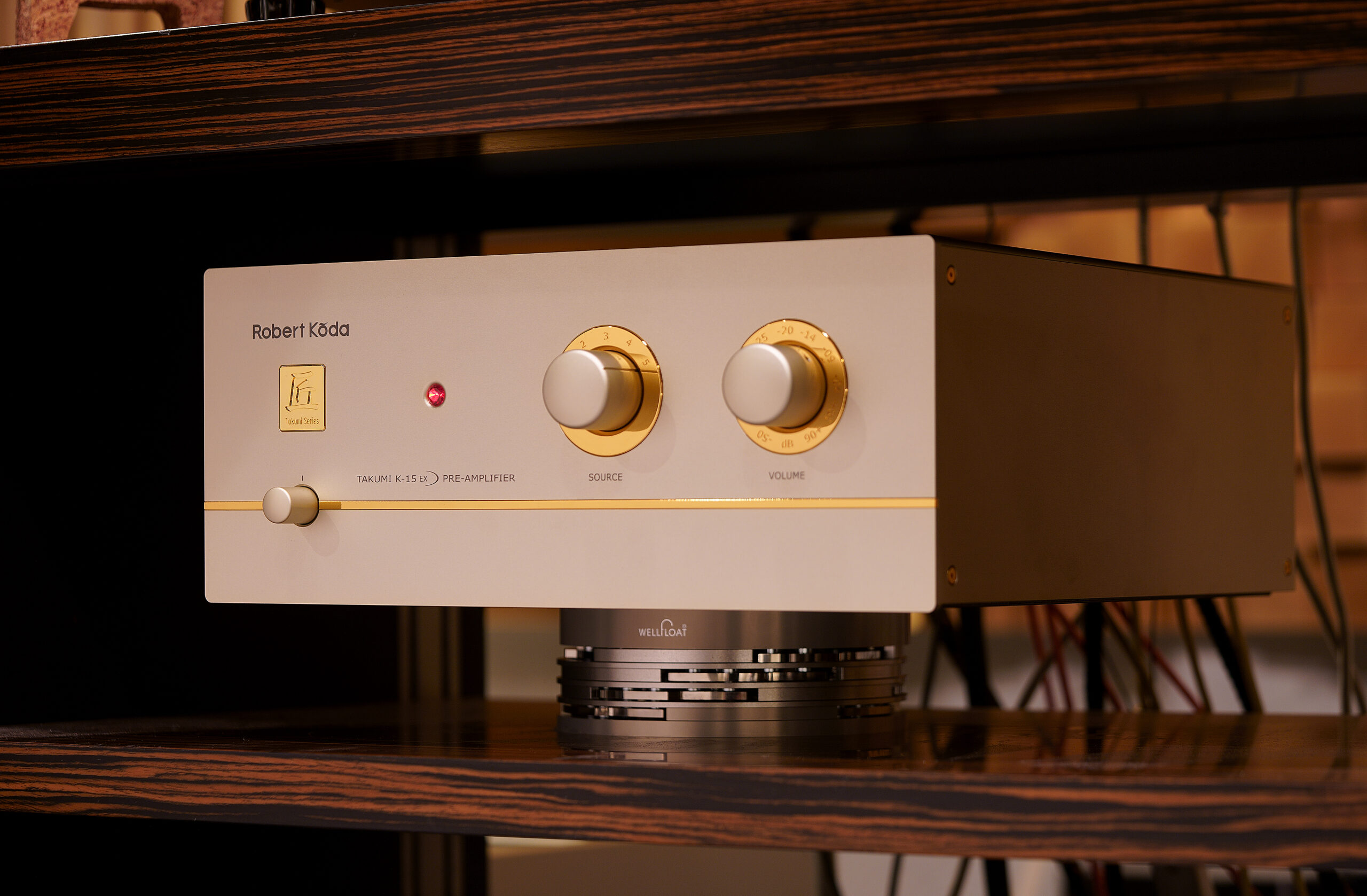Wellfloat Babel
About Wellfloat Babel
I am Speechless - BABEL by Wellfloat The “Babel” is invented by Ryoji Nagata, the President of Wellfloat. The world renowned famous car designer Shiro Nakamura who designed GT-R and Fairlady Z respectively at Isuzu Motors and Nissan Motors is responsible for the aesthetic design of it. The “pendulum” technology is taken to the extreme in the Babel project. Wellfloat claims it can annihitate mechanical vibrations at the molecular level measured by nanometer (the size of a molecule is 10 to the power of 8 divided by 1, which is about 10 nanometers). It is a circular metallic object that measures 175mm in diameter and 65mm in height with a weight of 2.9kg. It resembles the arc reactor in front of Ironman’s chest, and the 4-layer pendulum structure pivots somewhat to the configuration of energy cube in “Transformer”. It is quite a sight when I hold it in my hand the first time. Unlike isolation feet with a common 3- or 4-point support schematic under the corners of audio electronics, the single piece Babel is designed to be precisely placed under the “centre of gravity”. The context of this report is written from the perspective of music knowledge (I am learning everyday) because audiophile vocabularies are inadequate for me to describe the merits of the cutting edge. The Babel is placed under the centre of gravity under Robert Koda K15EX Super Ground Preamp in Divin Lab atop the Pranawire Anapurna board with Arya Revopod underneath sitting on top of the Well Float Ultimate Reference Rack. The recent addition of the Arya Air Blade Signature Edition had already leapfrogged the system to uncharted area particularly in terms of diction resolution. https://www.facebook.com/1375795022474575/posts/5098708423516531/?d=n Thus, I do not expect major improvement shortly. I listened to the system intensively for a week, 5 sessions of 2 hours each on all type of music from vinyl (Thales Statement Arm, Exquisite/EMT, JMF Audio PHS 7.3 phono stage, Da Vinci Gabriel/Hartvig Statement analog turntable), CD and server (Wadax Atlantis Reference DAC/Server). I jotted down long notes, digested them, and verified my founding with references to additional reading on the subject of “musical notation”. In music, the dynamics of a piece is the variation in loudness between notes or phrases. They are indicated by specific musical notation. The two basic dynamic indications are: * p or piano, meaning "quiet" * f or forte, meaning "loud or strong” Name Letters Level fortississimo fff very very loud fortissimo ff very loud forte f loud mezzo-forte mf average mezzo-piano mp average piano p quiet pianissimo pp very quiet pianississimo ppp very very quiet The typical range of dynamic markings is from ppp to fff. The very last 40 seconds of “Schindler’s List” performed by Anne Sophie Mutter in whispering volume is an example of ppp or even pppp. Likewise, Tchaikovsky marks a bassoon solo pppppp (6 ps) in his Pathétique Symphony. And the baritone passage of “Era la notte" from Verdi's opera Otello uses pppp. On the contrary, fff indicates extreme range of loudness. Such phenomenon is brought to life by loud instruments such as horn, brass and percussion playing all at once. For example, in Holst's The Planets, ffff occurs twice in "Mars" and once in "Uranus”. Igor Stravinsky used ffff at the end of the finale of the 1919 Firebird Suite. Tchaikovsky uses ffff in passages of 1812 Overture and the Fifth Symphony. Ever since the Babel was placed underneath the Robert Koda preamp, the revelation of dynamics at extreme whispering volume is staggering. I have to say such experiences never ever happened before in Divin Lab hitherto. This is a VERY big deal as it goes beyond “clarity of note”. The exertion of kinetic energy through the bow onto the strings, for instance, can now be visualised and felt from start to finish of each phrase. Again, drawing from the example of Anne Sophie Mutter performing “Schindler’s List” theme, she had to control the bow with minimum pressure to sustain tone focus at “pianississimo” (ultra low volume). I could see her taking the bow towards the bridge of the violin and tilted the bow forward playing on the edge of it in order to minimise bow hair contacting the strings. For less focus tone at pianissimo, some other violinist may choose to float the bow for long notes (no hand pressure) and plays close to the fingerboard. The closer to the fingerboard, the softer it gets, but the less intensity of tone becomes. Before the Babel was in the system, “silence between note” was more than palpable. With the Babel, “varying degree of silence amongst musical notes at the lowest volume” is presented confidently. Even the tiniest bow movement of the violinist can now be felt with energy at my listening position. This is shockingly amazing as though the soul of the performer lives in Divin Lab. The Babel also contributes to new listening experiences on the replay of pop songs. Throughout “Dangerous” Michael Jackson was humming melodies and grooves at low volume at the beginning. Now I can discern much more of his mood through his whispering rap because his execution of lyrics has become conversational. That is made possible due to dynamics at extreme low volume passages are now revealed with “divinity in motion”. That in turn enhances rhythmic experiences tremendously, as tempo of this song is at 113 beats per minute. I am soulfully captivated by 李宗盛 and 廬冠庭 singing “往事如風" in a live concert. There was a harmonica playing at some passages of the song. I always know there is “a harmonica at the background”, but now the “character of the harmonica player” is transpired from merely background sound to a musician co-performing with the two lead vocals. That really takes my breath away. Extending similar experiences to violin/cello/piano concerto is phenomenal. Before it was the main performer caught all my attention. The rest of the orchestra was delivered with pristine clarity in layers, albeit lacking character somewhat in retrospect. What draws my attention now does not restrict to the violin/cello/piano in a concerto setting, as I could feel the character of the musicians behind the horn, the woods and winds, and the 2nd strings. The tempo of timpani at the far back at ppp/pppp volume conditional on the recording quality is easily discerned. Likewise, the holistic character of background singers in chorus session of “Master of the House”, one of many songs of Les Miserable, were similarly transpired from clarity of images and layering to a group of human fresh singing with mood that corresponded to emotions of lead vocals. Even at loud volume, all images are very stable with vivid facial expressions. In another example, the last live concert of German pianist Wilhelm Backhaus recorded in Austria, I could even feel “coughing dynamic” from one of the many audiences because airflow coming from his mouth coupled with the air. Another noteworthy observation from my partner JLam is the easy comprehension of the physical size of recording venue. For example, the size of Queen Elizabeth Stadium in Hong Kong, is much smaller than the Hong Kong Coliseum in Kowloon. He said to me, “Chris, I could now feel the existence of the physical boundaries of the recording venue. It has to be a physical frame within it. Without the Babel, these recordings are full of hall ambience but I couldn’t easily tell the size of one relative to another as though there is no physical boundary.” This is how extreme Babel has taken my system to. I have to highlight the results achieved in Divin Lab represents accumulative positive contributions from Tripoint Troy Elite NG x 2, JMF PCD102 x 2, Pranawire Cloud 9 x 1, 10 sets of Arya Revopod, and Dalby Pirueta Record Weight alongside cables from Dalby Audio Design, Esprit, Ikigai Audio, and Skogrand Cables etc. The choice of the Babel name by Ryoji Nagata san is likely to be premised on the aesthetic shape of it resembling the Babel Tower described in the Book of Genesis Chapter 11 in Bible. I researched the interesting history of Babel. Under a religion and mythical context, Babel is also called the Gate of God. It was built by people in ancient time with an aim to escape flooding punishment by God. But such human act made God angry, and triggered him to confuse their languages. They had to stop building it as they couldn’t communicate with each other (The myth was that people before building the Babel Tower spoke in one common language.) The connotation from this story is certainly negative. But some historians and scholars view Babel as cradle of civilisation, as diversity of language leads to diversity of culture. I prefer to illuminate Babel in a positive context because diversity of culture also leads to diversity of technology. That is how society prospers. Chris Leung
Visit theWellfloat Babel Website




